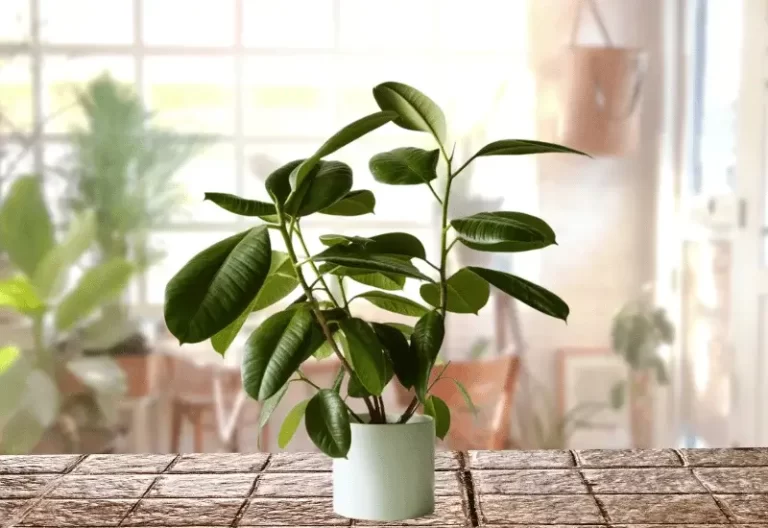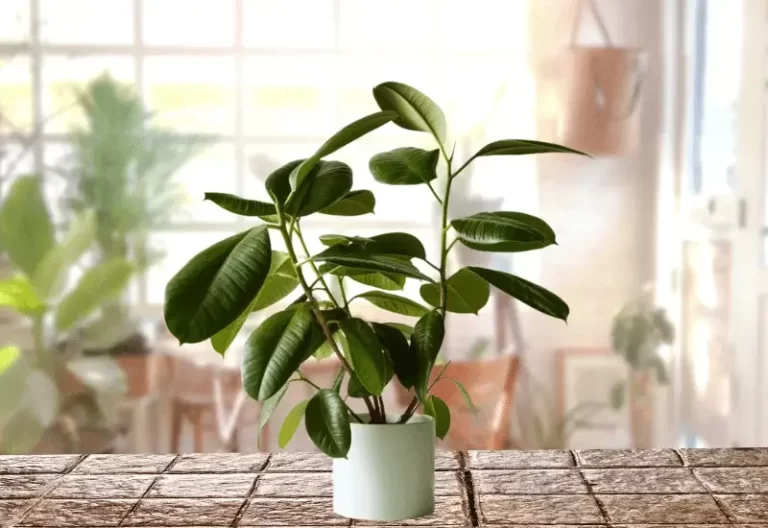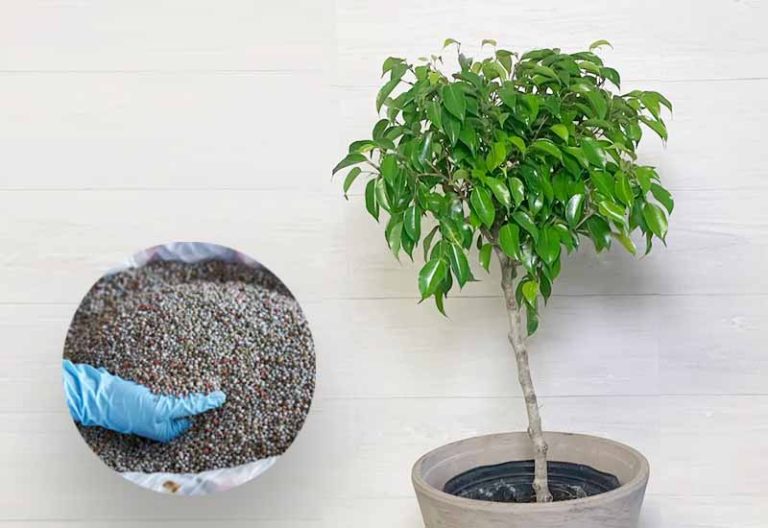Ficus
A versatile and timeless plant family known for its lush foliage, air-purifying qualities, and effortless charm that enhances any indoor or outdoor space.
-
10 Fascinating Facts About Ficus Plants and Trees
Ficus Plants and Trees are a perfect choice if you’re looking for a houseplant that stands out. This incredibly diverse group of plants, which includes everything from majestic outdoor ficus trees to the most popular indoor fig plants, has captured the hearts of gardeners and interior designers worldwide. With hundreds of species, Ficus offers a…
-
5 Secret Tips for Pruning Your Ficus Tree
Pruning your Ficus tree is like a haircut for growth. Wear protection, cut weak branches, and apply cut paste. Timing depends on where it lives. For outdoors, late summer, early fall, or early spring is good. The Ultimate Guide to Pruning Your Ficus Tree 1. Assess Your Ficus Tree Before pruning, take a step back…
-
Ficus Plant Water: 10 Essential Key Points for Optimal Care
When it comes to ficus plant water needs, finding the right balance is key to avoiding overwatering and underwatering issues. The Ficus plant, also called the fig tree, is a popular indoor plant. It has shiny leaves and helps clean the air in your home. There are different types of Ficus plants, each with its…
-
15 Types of Ficus Outdoor Plant Growth and Care
While Ficus plants have long been cherished as indoor companions, their outdoor counterparts hold their charm and allure. Ficus outdoor plants have earned a special place in gardens and landscapes worldwide with their striking foliage, resilience, and adaptability. Types of Ficus Outdoor Plant Ficus Religiosa (Sacred Fig) The Sacred Fig, also known as the Bodhi…
-
15 Types of Ficus Indoor Plant growth and Care
Indoor gardening enthusiasts often seek to bring a touch of nature into homes and workplaces, and Ficus indoor plants are ideal choices for this purpose. With their striking foliage and adaptability to various indoor environments, Ficus indoor plants have become favorites among seasoned gardeners and those new to indoor greenery. This guide will delve into…
-
10 Expert Tips for Choosing the Best Fertilizer for Ficus Tree
The right fertilizer for Ficus tree can make a world of difference in the health and vitality of your plant. Ficus trees are renowned for their lush green foliage and ability to bring natural beauty to indoor and outdoor spaces. Proper care ensures these trees thrive and maintain their vibrant appearance. One crucial aspect of…
Ficus Plants and Trees The Fascinating Fig Family
Ficus Plants and Trees are among the most captivating and diverse plant species on Earth. Belonging to the Moraceae (mulberry) family, the Ficus genus includes over 850 species — from small indoor plants to giant trees that can live for centuries.
We’ll explore everything you need to know about Ficus Plants and Trees, including their types, characteristics, benefits, care tips, and cultural significance.
What Are Ficus Plants and Trees?
Ficus Plants and Trees are commonly known as figs. They grow naturally in tropical and subtropical regions but can also be cultivated indoors across the world. These plants are admired for their glossy leaves, air-purifying abilities, and unique growth habits — some even develop aerial roots and spread across large areas.
While many people know the common fig (Ficus carica) for its edible fruit, the genus also includes ornamental and sacred species that hold historical, environmental, and spiritual importance.
Popular Types of Ficus Plants and Trees
The world of Ficus Plants and Trees is incredibly diverse. Here are some of the most popular and loved species:
- Ficus benjamina (Weeping Fig)
A classic indoor plant with slender branches and lush, glossy leaves. It’s often used in homes and offices because it thrives in containers and can be shaped beautifully.
- Ficus lyrata (Fiddle Leaf Fig)
Famous for its large, violin-shaped leaves, this plant has become a staple in modern interior décor. It brings a tropical and elegant vibe to any room.
- Ficus elastica (Rubber Plant)
With broad, dark green leaves, the Rubber Plant is both stunning and hardy. It’s easy to care for and is known for improving indoor air quality.
- Ficus religiosa (Peepal or Sacred Fig)
Deeply revered in South Asia, this species is sacred in Hinduism, Buddhism, and Jainism. The heart-shaped leaves of the Peepal tree symbolize enlightenment and wisdom.
- Ficus benghalensis (Banyan Tree)
One of the most magnificent Ficus Trees, the Banyan spreads across vast areas through aerial roots that form new trunks. It’s a living wonder of nature.
- Ficus microcarpa (Indian Laurel / Chinese Banyan)
A popular choice for bonsai and landscaping. Its strong roots, dense canopy, and adaptability make it ideal for both urban and natural environments.
How to Grow and Care for Ficus Plants and Trees
To keep Ficus Plants and Trees healthy, it’s important to provide the right environment. Here are the ideal growing conditions:
| Factor | Ideal Condition |
| Light | Bright, indirect sunlight (some species tolerate full sun) |
| Water | Keep soil moist but not soggy; avoid overwatering |
| Soil | Well-draining potting mix with organic matter |
| Temperature | 18–30°C (avoid cold drafts) |
| Humidity | Moderate to high humidity preferred |
| Fertilizer | Monthly feeding during growing season (spring–summer) |
Tip: Ficus plants dislike sudden changes in location or light — move them gradually to avoid leaf drop.
Common Issues with Ficus Plants and Trees
Like all plants, Ficus Plants and Trees can face a few common challenges. Here’s how to solve them:
| Problem | Likely Cause | Solution |
| Leaf Drop | Sudden temperature or light change | Keep in stable conditions |
| Yellow Leaves | Overwatering | Allow soil to dry slightly before watering again |
| Brown Tips | Low humidity | Mist leaves regularly |
| Pests (mealybugs, scale) | Dry air or weak plant health | Use neem oil or insecticidal soap |
Benefits of Ficus Plants and Trees
There are countless benefits to growing Ficus Plants and Trees, whether indoors or outdoors:
- Air Purification: Removes harmful toxins and improves air quality.
- Mental Wellness: Greenery reduces stress and enhances relaxation.
- Environmental Importance: Many species support wildlife and stabilize soil.
- Aesthetic Appeal: Perfect for home décor, gardens, and landscapes.
- Cultural Value: Revered in ancient traditions as symbols of wisdom and life.
The Cultural and Historical Significance of Ficus Plants and Trees
Throughout history, Ficus Plants and Trees have held sacred and symbolic meanings across cultures:
- Buddhism: Buddha attained enlightenment under a Ficus religiosa, known as the Bodhi Tree.
- Hinduism: The Peepal Tree represents life, creation, and eternity.
- Ancient Rome: The Ficus Ruminalis was linked to the legend of Romulus and Remus.
- Environmental Symbolism: The Banyan tree, with its expanding roots, symbolizes immortality and unity.
Final Thoughts
Whether you’re growing a small Ficus Plant in your living room or admiring a centuries-old Ficus Tree in the wild, one thing is certain — these plants are timeless symbols of beauty, strength, and spiritual harmony.
With proper care and attention, Ficus Plants and Trees can thrive for decades, purify your air, and bring a natural sense of peace to your surroundings.






